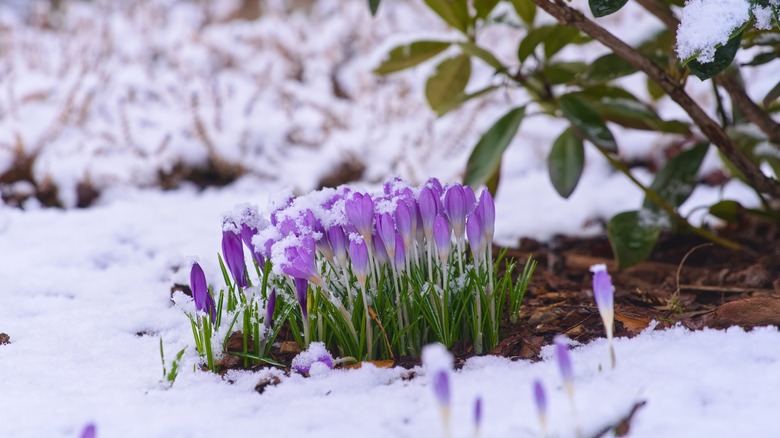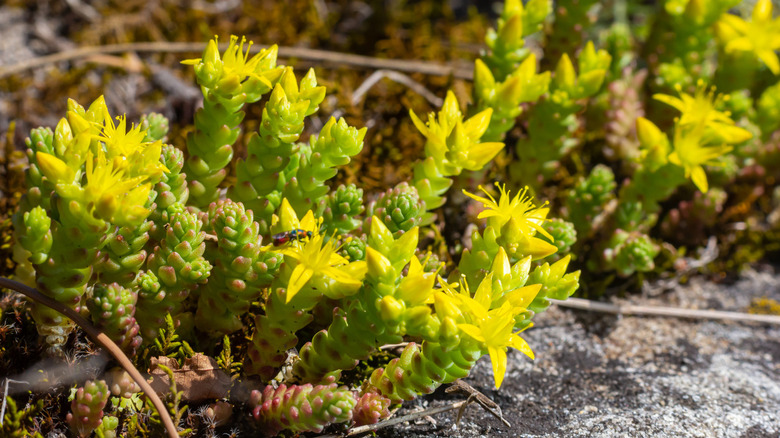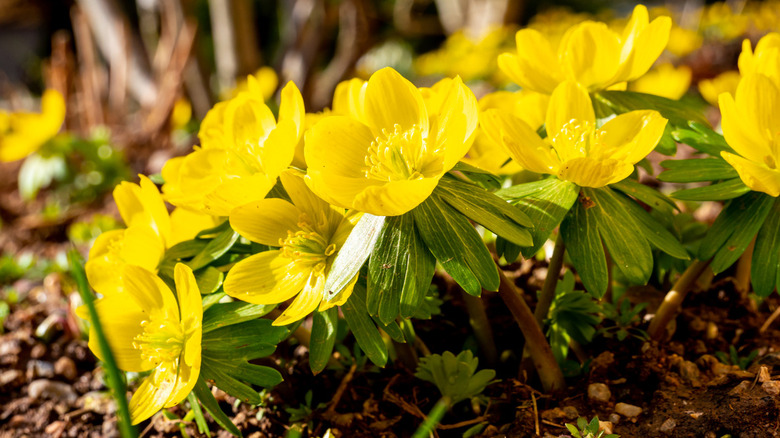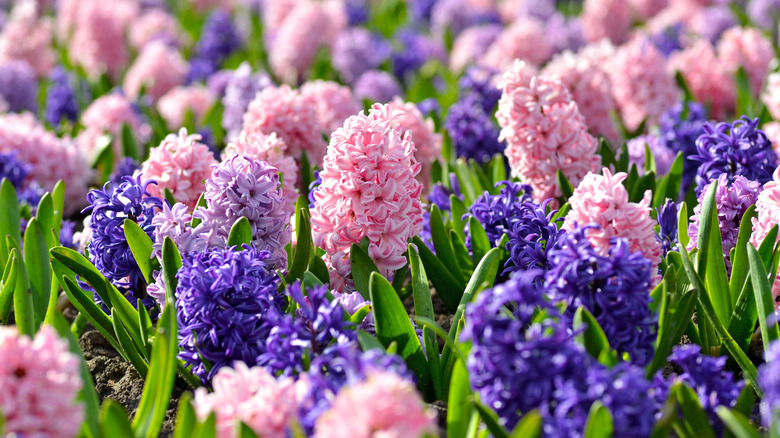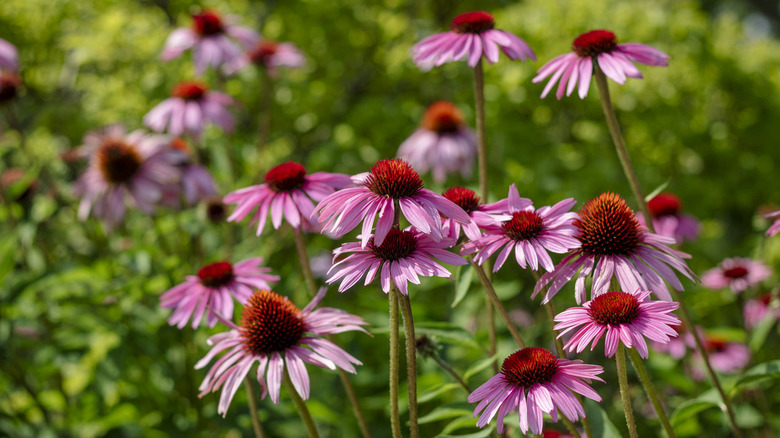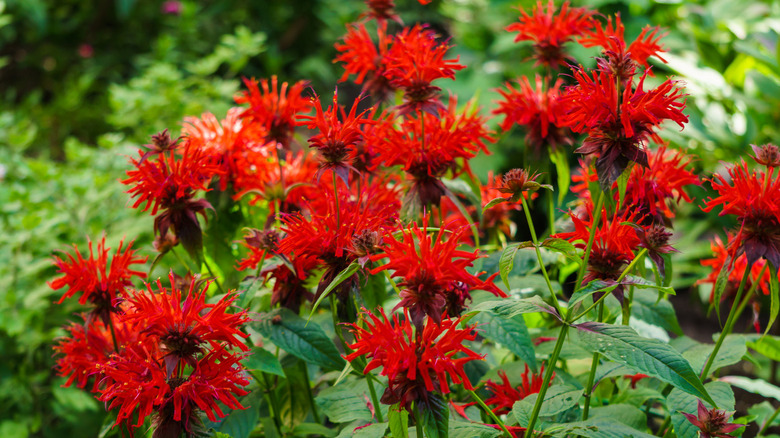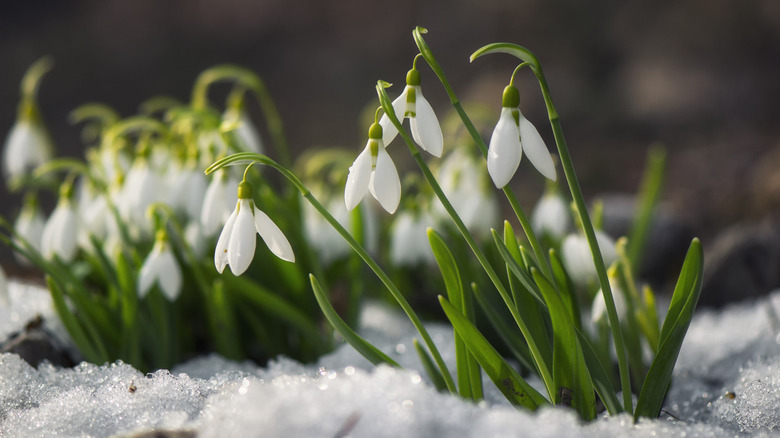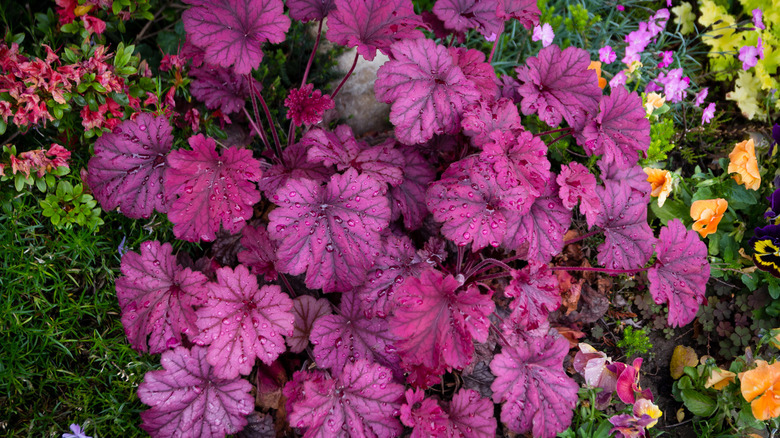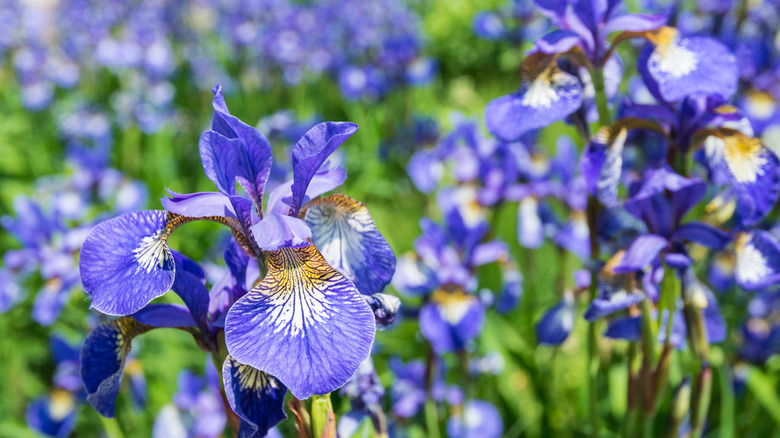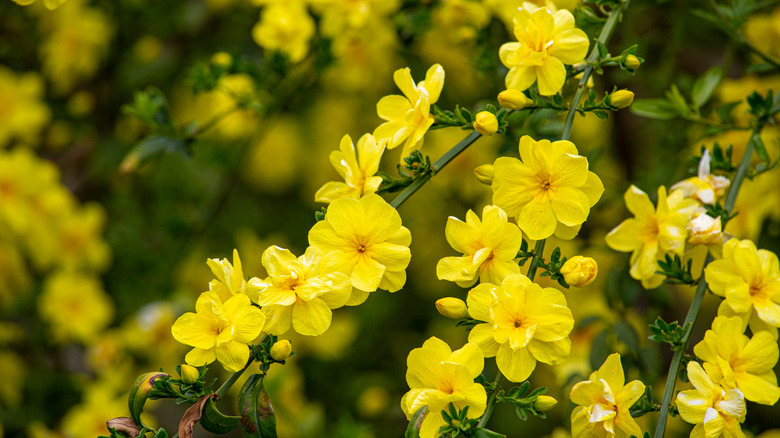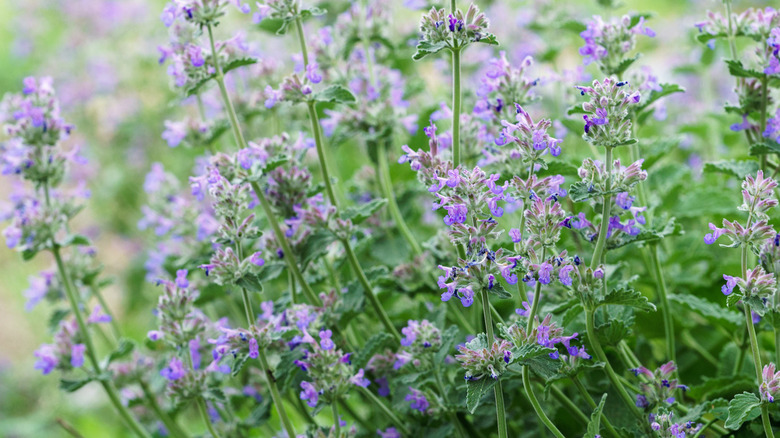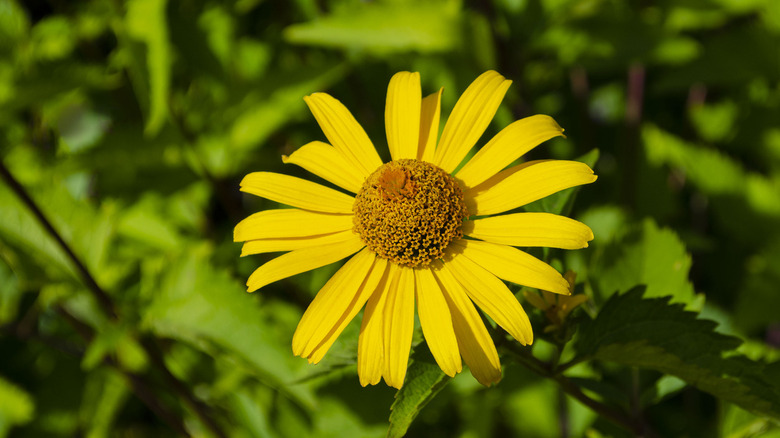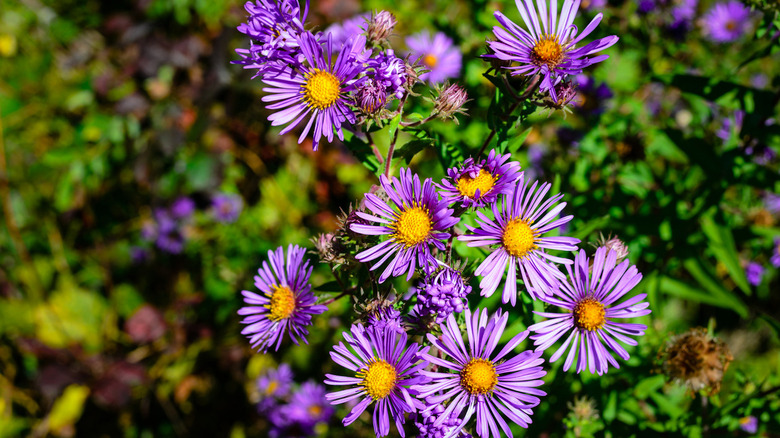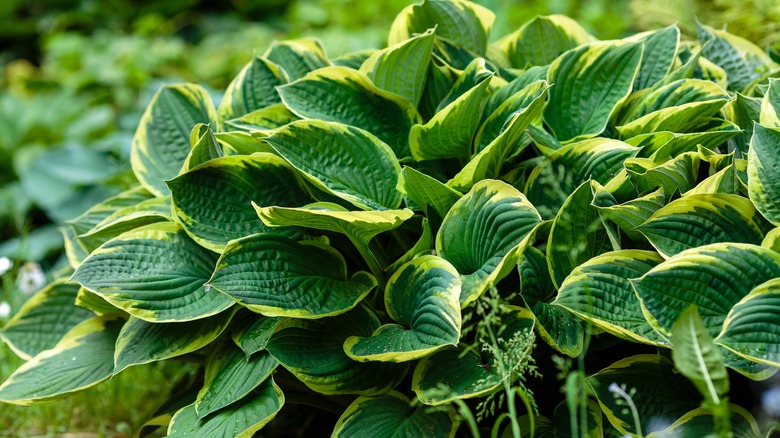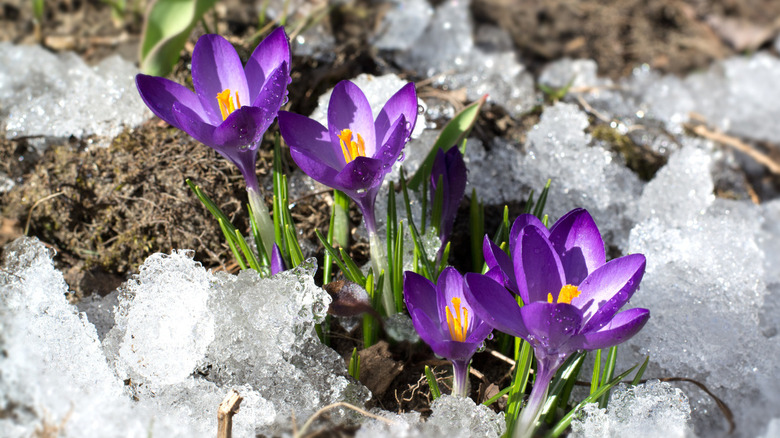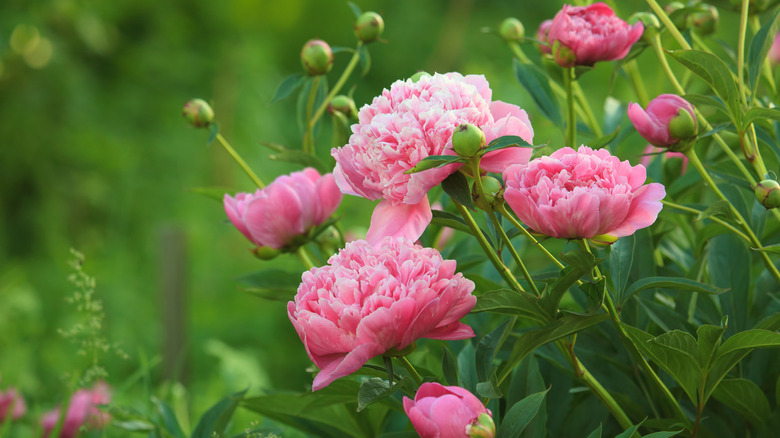15 Flowering Perennials That Can Withstand Frigid Winters
For a lot of people, winter is for enjoying your time indoors away from the garden because of the cold climate. However, it will interest you to know that it is possible to introduce some color and life to your garden during the cold winter months. There are plants of all sizes and varieties that will withstand the dangerously low winter temperatures. However, before starting to dig away, you should be aware of your USDA hardiness zone.
What's more, according to Iowa State University Extension and Outreach, winter can kill even cold hardy plants. So it is necessary to prepare your plants for winter by keeping them healthy. Nonetheless, flowers that are hardy in your zone are likely to be tolerant to the winter temperatures of your particular region. Another note worth mentioning is that it is important that you plant cold hardy perennials and shrubs early enough before the ground freezes. This will go a long way in ensuring the plants establish their roots in moderate temperatures.
Gardening during the cold winter months is not totally impossible — proper planning and also picking the right flowers will go a long way in ensuring your plants survive the cold weather. Take a look at the following plants that can take the worst of winter.
1. Stonecrop
Stonecrop, better referred to as sedum, is a large plant family known for taking the worst of what weather can present — both heat and extreme cold, as per the University of Vermont. The sedum plant is a succulent with thick fleshy leaves that come in different shapes and sizes. They bloom with tiny star-shaped flowers during the fall. They are low-maintenance plants that will allow you to get away with moderate neglect.
Bloom Season: Summer, fall
USDA Growing Zone: 3-10
Growing Conditions: Full, partial sun
Soil Type: Well-drained soil
Size: 4-24 inches tall and 18-24 inches wide
2. Winter aconites
Winter aconites are another cold hardy perennial that will grace your garden late into the season with mellow yellow flowers, according to the North Carolina State University Extension. This plant prefers direct sunshine, especially when it blooms during winter. As the weather gets warmer, be sure to provide it with shade. They are the perfect rock garden plant showcasing their beautiful yellow flowers. Maintenance is a breeze since this plant typically thrives on neglect.
Bloom Season: Spring, winter
USDA Growing Zone: 3-7
Growing Conditions: Full, partial sun
Soil Type: Well-drained soil
Size: Up to 5 inches tall and wide
3. Hyacinth
The hyacinth (Hyacinthus orientalis) plant is expected to survive most winters. This particular plant is known for its distinct strong fragrance and showy flower spikes that are available in several colors, including blue, white, and also pink. Hyacinth is an easy-to-grow perennial that will show up every year without fail. It is perfect for rock gardens or as border plants when planted in masses (via the Missouri Botanical Garden).
Bloom Season: Spring
USDA Growing Zone: 4-8
Growing Conditions: Full, partial sun
Soil Type: Moist but well-drained soil
Size: Up to 1 foot tall and up to ½ a foot wide
4. Coneflower
The purple coneflower (Rudbeckia purpurea) is both drought and cold tolerant. It is easy to grow and blooms with showy purple daisy-like flowers. While the coneflower might appear dainty, it is quite tolerant to most conditions. According to Cornell University, deadheading might prolong the flowering period but keeping the fall blooms will also increase visual interest during winter.
Bloom Season: Summer, early fall
USDA Growing Zone: 3-9
Growing Conditions: Full sun
Soil Type: Rich well-drained soil
Size: 1-5 feet tall and 1-2 feet wide
5. Bee balm
Loved for its brightly colored flowers and relatively longer flowering period, the bee balm (Monarda spp.) is a hardy perennial that tolerates temperatures in both extremes. While the foliage might not be attractive, the bright blooms compensate effectively and will delight your guests as well as insects and birds (via North Carolina State University Extension). However, you need to be aware that this plant grows quite fast and will spread quickly.
Bloom Season: Summer
USDA Growing Zone: 3-9
Growing Conditions: Full sun
Soil Type: Rich moist soil
Size: 10 to 48 inches tall and 10 to 36 inches wide
6. Snowdrops
If you are in search of a cold hardy perennial that needs little to no maintenance, then snowdrops (Galanthus nivalis) may be ideal. It goes without saying that this plant is not necessarily the showiest, but having a few cheerful plants that brave the winter is better than having no plants. Nonetheless, this plant blooms with white flowers that hang delicately at the edge of the green stalks (via the University of Wisconsin-Madison Division of Extension).
Bloom Season: Spring
USDA Growing Zone: 3-7
Growing Conditions: Full to partial sun
Soil Type: Well-drained rich soil
Size: Up to 6 inches tall
7. Coral bells
Loved for their ornamental foliage, coral bells (also referred to as Heuchera) are a winter-hardy perennial that can survive the punishing temperatures. The coral bell plant is available in several colors that are perfect for most landscapes. Frost heaving tends to lift coral bells out of the soil, so it is necessary to apply enough mulch during the first frost to add more weight and prevent this effect (via the Iowa State University Extension Outreach).
Bloom Season: Summer, spring
USDA Growing Zone: 4-9
Growing Conditions: Full sun
Soil Type: Well-drained soil
Size: 8-18 inches tall and 12-24 inches wide
8. Siberian iris
Known for its showy flowers, the Siberian iris (Iris sibirica) is also notorious for braving the cold winter months effortlessly. In fact, the North Carolina State University Extension notes that this plant blooms well right after a cold winter climate. Compared to other plants in the iris family, the Siberian iris is not as showy and attractive but overcompensates for this by being quite easy to grow.
Bloom Season: Summer, spring
USDA Growing Zone: 3-8
Growing Conditions: Full to partial sun
Soil Type: Well-drained soil
Size: 3-4 feet tall and 2-3 feet wide
9. Winter jasmine
The winter jasmine (Asminum nudiflorum) is a deciduous perennial shrub that seems to thrive in cold temperatures. Although not quite as fragrant as its counterparts, the winter jasmine is the hardiest of all the other jasmine varieties. This plant presents no difficulties when growing, making it an ideal plant for traveling gardeners. It blooms with yellow flowers that will put on a show during the dull winter (via the University of Arkansas Division of Agriculture).
Bloom Season: Late winter
USDA Growing Zone: 6-10
Growing Conditions: Full to partial sun
Soil Type: Neutral well-drained soil
Size: Up to 15 feet tall
10. Catmint
If you fancy a perennial herb that blooms in the summer with subsequent repeat blooms throughout the season, consider catmint (Nepeta). If you love lavender, then catmint is a better substitute because it is quite tolerant to winter temperatures. Catmint grows fairly fast and has a sprawling growth habit, making it a good edging plant (via Colorado State University Extension).
Bloom Season: Spring summer
USDA Growing Zone: 6-10
Growing Conditions: Full to partial sun
Soil Type: Well-drained soil
Size: 10-24 inches tall and 1-2 feet wide
11. False sunflower
The false sunflower (Heliopsis helianthoides) blooms with cheerful yellow flowers that look like actual sunflowers (via Missouri Botanical Garden). It grows rather quickly but hardly blooms within the same year of planting. It also grows in clumps and, therefore, doesn't spread, making it quite easy to maintain. Although some varieties are heat tolerant, a majority are also cold hardy as well.
Bloom Season: Summer
USDA Growing Zone: 3-9
Growing Conditions: Full sun
Soil Type: Well-drained soil
Size: 3-5 feet tall and 2-3 feet wide
12. New England aster
Consider adding color to your garden during fall by introducing the New England aster (Symphyotrichum novae-angliae). This plant flowers with daisy-like blooms that may appear in purple or yellow colors depending on the variety. Usually, the plant blooms late in the season and thrives in the cold, hence the name frost flower (via Ohio State University). In fact, the extreme summer heat often damages it.
Bloom Season: Fall
USDA Growing Zone: 4-8
Growing Conditions: Full sun
Soil Type: Moist well-drained soil
Size: 3-6 feet tall and 2-3 feet wide
13. Hosta
Revered for their beautiful foliage, hostas (Hosta spp.) are among the few plants that grow well in the shade. They are relatively easy to plant and propagate, not to mention the fact that they come back year after year. This plant can withstand extremely low temperatures when established. They are available in a variety of colors, giving you the luxury of experimenting with multiple shades (via the University of Minnesota Extension).
Bloom Season: Summer
USDA Growing Zone: 3-9
Growing Conditions: Shade
Soil Type: Loamy well-drained soil
Size: 6-48 inches tall and 10-60 inches wide
14. Crocus
The crocus flower (Crocus spp.) is often the earliest bloomer in any garden, signifying the beginning of spring. This low-growing hardy perennial might not be the most beautiful in the garden but its durability and winter-blooming capacity make it a good option for adding color to your landscape during winter. However, David Trinklein from the University of Missouri advises planting the crocus flower during fall to allow it to establish good roots early enough.
Bloom Season: Spring
USDA Growing Zone: 3-8
Growing Conditions: Full to part sun
Soil Type: Well-drained soil
Size: 6 inches tall and 1-3 inches wide
15. Peonies
The peony plant is another great perennial to include in your garden for that winter charm. This particular plant blooms with beautiful large showy flowers that are a delight to the eyes. According to the University of Wisconsin-Madison Division of Extension, peonies need cold weather during winter to break dormancy. The best time to plant peonies is during fall just before the ground freezes. This gives the new plants enough time to establish roots.
Bloom Season: Spring, late summer
USDA Growing Zone: 3-8
Growing Conditions: Full sun
Soil Type: Well-drained soil
Size: Up to 3 feet tall and wide
